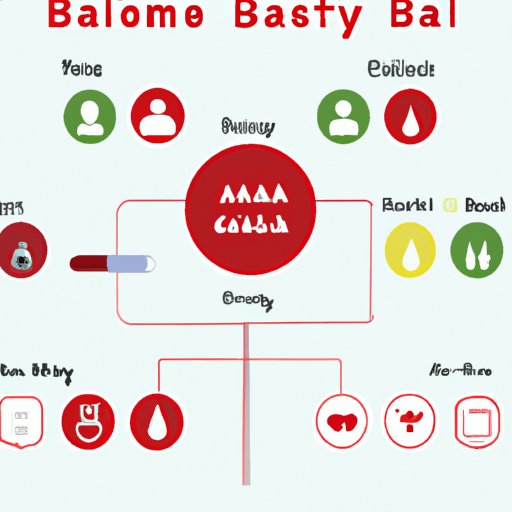Introduction
Blood types are determined by the presence or absence of certain antigens on the surface of red blood cells. Knowing your blood type can be important for many reasons, including understanding your overall health and being prepared for medical emergencies. In this article, we’ll explore different ways to learn your blood type, from visiting a doctor or blood donation center to researching your family tree.

Visit a Doctor or Blood Donation Center to Get Tested
One of the most reliable ways to find out your blood type is to visit a doctor or blood donation center and get tested. During the testing process, a healthcare professional will draw a small sample of your blood and send it to a lab for analysis. The lab will then use antibodies to determine your blood type and provide the results to your doctor.
The benefits of doing this include accuracy and convenience. By getting tested through a healthcare provider, you can rest assured that the results are accurate. Plus, they can provide additional information about your blood type and other related health topics.
Check Your Medical Records
If you’ve had any past blood tests, such as those taken during routine physicals, you may be able to find out your blood type from your medical records. Look for documents that list the results of your blood work and see if your blood type is listed. Depending on the age of the records, you may need to contact your doctor’s office for help in locating them.
However, there are some potential challenges with this approach. For example, not all blood tests include a blood type test. Additionally, some medical records may not include your full blood type, only the main type (A, B, AB, or O).
Ask Your Parents
If you’re trying to figure out your blood type, one of the first people you should ask is your parents. They may already know your type and be able to tell you right away. This is because parents usually pass their blood type on to their children, so if they know their type, chances are they can tell you yours.
In addition, many parents keep records of their children’s blood type in case of medical emergencies. If your parents don’t know your type, they may be able to locate these records and provide them to you.
Take an At-Home Test Kit
You can also purchase an at-home test kit to determine your blood type. These kits typically come with a lancet to collect a sample of your blood, a collection tube to hold the sample, and reagents to identify the blood type. To use the kit, you prick your finger with the lancet, collect a sample of blood in the tube, and then add the reagents to the sample. The reagents will change color depending on the type of blood you have.
The pros and cons of at-home testing depend on the accuracy of the test kit you choose. Quality kits are generally accurate, but cheaper ones may not be. Additionally, at-home tests require you to use a lancet to draw your own blood, which can be difficult and uncomfortable for some people.

Look for Clues in Previous Blood Transfusions
If you’ve ever received a blood transfusion, you may be able to determine your blood type based on the type of blood you received. For example, if you received type A blood, chances are you have type A blood yourself. However, keep in mind that this is not always the case, as some people have different blood types than the blood they receive.
To find out the type of blood you received, you can look for records of your transfusions. These records may be stored in your medical records or in the records of the hospital or clinic where you received the transfusion.
Research Your Family Tree
Another way to determine your blood type is to research your family tree. While you may not know your exact type, you can often make educated guesses based on the types of your family members. For example, if both your parents have type A blood, there’s a good chance you do too.
This approach has several advantages. First, it’s easy to do from home. All you need is access to genealogy databases or records of your family members’ blood types. Additionally, it can be a fun and interesting activity, giving you insight into your family’s history.
Donate Blood and Ask the Results
Finally, if you’d like to find out your blood type and do something good for the community at the same time, consider donating blood. When you donate blood, the blood bank will test the sample to determine your type. Afterward, you can ask the results of the test and learn your type.
Donating blood has many benefits. Not only will you be helping others in need, but you’ll also be rewarded with knowledge about your own health. Plus, you may even be eligible for special discounts or rewards from the blood bank.
Conclusion
Figuring out your blood type doesn’t have to be a complicated process. Whether you visit a doctor or blood donation center, check your medical records, ask your parents, take an at-home test kit, research your family tree, or donate blood, you can learn your type quickly and easily.
By following the steps outlined in this article, you can gain a better understanding of your health and be prepared for any medical emergencies. So, what are you waiting for? Start exploring today and find out what type of blood you have.
(Note: Is this article not meeting your expectations? Do you have knowledge or insights to share? Unlock new opportunities and expand your reach by joining our authors team. Click Registration to join us and share your expertise with our readers.)
